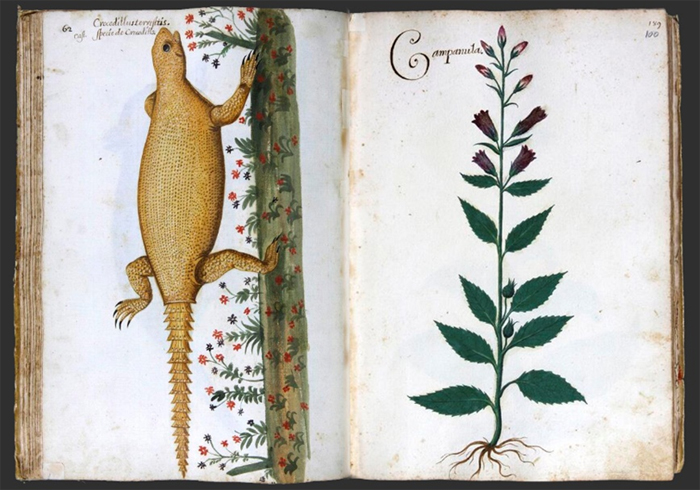Under the mandate of Jaime Honorato Pomar, the chair of "herbs and other simple medicines" was developed around the botanical education of students, promoting the development of large herbariums and almost absolute knowledge of the plants surrounding the city of Valencia.

The University of Valencia was inaugurated in 1502 as a municipal university, managed and financed by the city's bourgeois oligarchy. Within this first university, two medicine chairs were organized: one dedicated to surgery and another that taught anatomy in the fall and winter and medical botany in the spring and summer. These two disciplines were divided in 1560, coming to exist a chair of "herbs and other simple medicines".
At this point in history, we must comment the figure of Jaime Honorato Pomar, who was born in Valencia in 1550 and held the chair of "herbs and other simple medicines" in 1584. Under his mandate, the chair developed around the botanical education of students, promoting the development of large herbariums and almost absolute knowledge of the flora surrounding the city of Valencia.
Such was the fame achieved by the chair, that it has been documented that the city of Valencia was one of the main places of origin of the plants that Felipe II imported to elaborate the famous gardens of Aranjuez. In this context, the king strengthened his relationship with Pomar and recognized his effort and knowledge with a commemorative square in the Royal Palace and with the gift of the Atlas of Natural History that would end up being called the Pomar Codex. This contains a total of 218 zoology and botany prints that stand out both for their artistic appeal and for the scientific information they contain.
The specimens contemplated in this book are distributed unevenly between the Old and the New World, with more specimens belonging to the first of the two. In this group we find from a common coot or a common stilt, both typical birds of the Albufera, to exotic animals such as the Senegal genet, some large sand lizards or the rhinoceros.
Among the exotic specimens we only found seven specimens, among which a famous "bird of paradise" or a specimen of capuchin monkey (also called "cay" in the book) stand out, which is one of the earliest species of monkey spread in captivity by Europe.
The same thing happens at the botanical level, since most of the registered species are of European origin and of a medicinal or “adornment” nature. In the field of exotic species, twenty-five species are registered, such as the American hawthorn, the banana tree or the tomato plant.

















